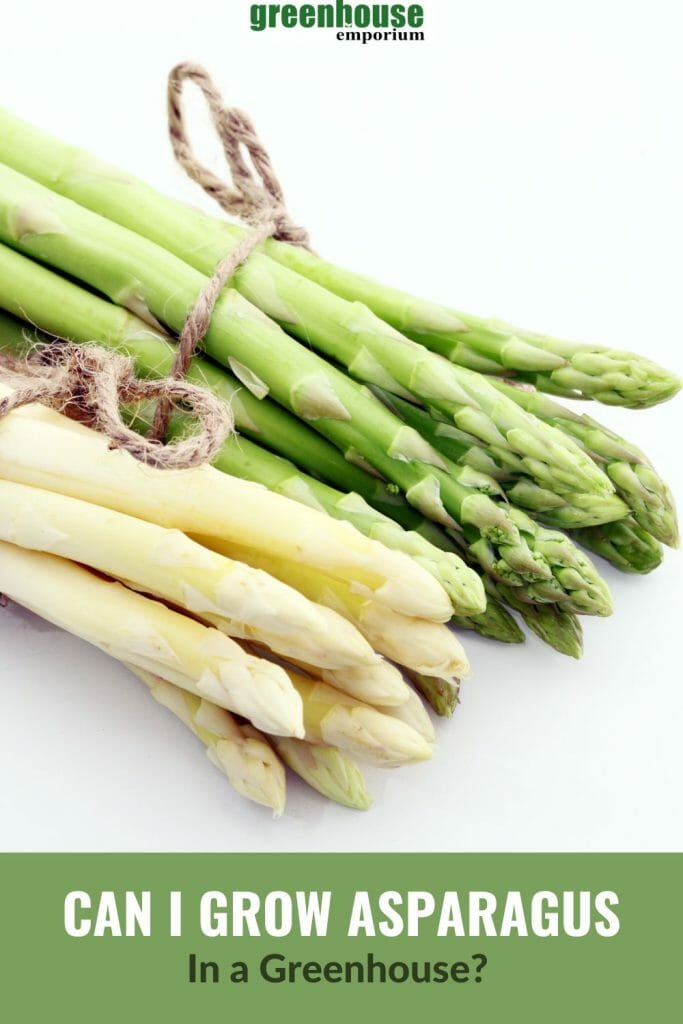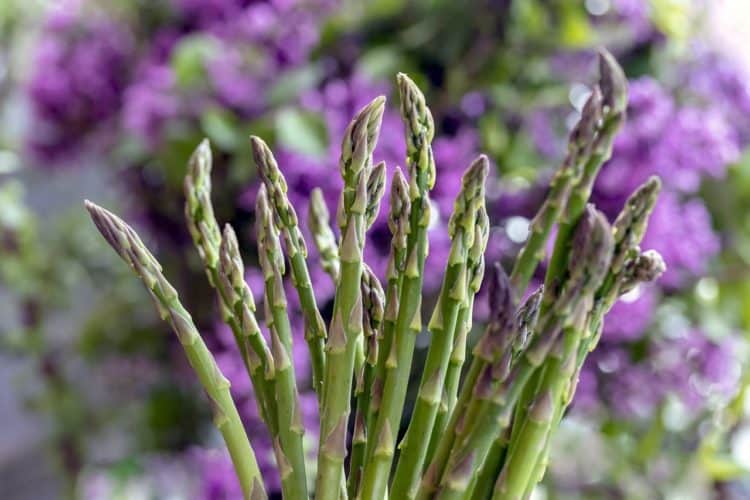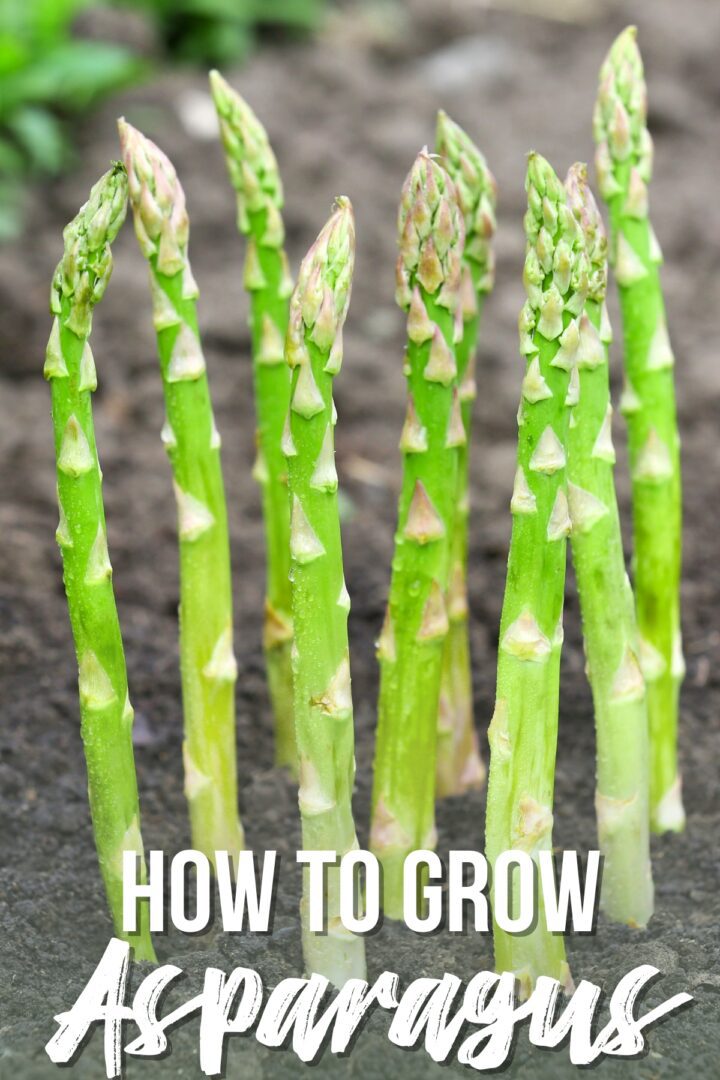Understanding Asparagus Planting Seasons: A Key to Success
Asparagus is a temperamental crop that requires precise timing to thrive. The best time to grow asparagus is a critical factor in determining the success of the crop. Climate, soil temperature, and daylight hours all play a significant role in asparagus growth, and understanding these factors is essential for gardeners to determine the optimal planting time in their region.
In general, asparagus is a cool-season crop that prefers to grow in temperatures between 60°F and 80°F (15°C and 27°C). It thrives in areas with mild winters and cool, wet springs. In regions with harsh winters, it’s essential to wait until the soil has warmed up and the risk of frost has passed before planting asparagus. In areas with hot summers, it’s crucial to plant asparagus in early spring or late summer/early fall to avoid the heat.
Soil temperature is another critical factor in asparagus growth. Asparagus crowns typically start to grow when the soil temperature reaches around 50°F (10°C). Gardeners can use a soil thermometer to check the soil temperature and determine the best time to plant asparagus in their area.
Daylight hours also play a significant role in asparagus growth. Asparagus requires a certain amount of daylight hours to grow, and the exact amount varies depending on the variety. In general, asparagus requires around 12-14 hours of daylight to grow, which is why it’s essential to plant it in a location that receives full sun to partial shade.
By understanding the impact of climate, soil temperature, and daylight hours on asparagus growth, gardeners can determine the best time to grow asparagus in their region. This knowledge will help them to plant asparagus at the optimal time, ensuring a healthy and productive crop.
How to Prepare Your Soil for Asparagus Planting
Preparing the soil for asparagus planting is a crucial step in ensuring a healthy and productive crop. Asparagus requires a well-draining, nutrient-rich soil with a pH between 6.5 and 7.5. To achieve this, gardeners should test their soil to determine its pH level and nutrient content.
Soil testing can be done using a DIY kit or by sending a sample to a laboratory for analysis. Based on the test results, gardeners can amend their soil to create an optimal growing environment for asparagus. For example, if the soil is too acidic, gardeners can add lime to raise the pH level. If the soil is too alkaline, gardeners can add elemental sulfur to lower the pH level.
In addition to pH level, asparagus also requires a nutrient-rich soil with adequate levels of nitrogen, phosphorus, and potassium. Gardeners can add organic matter such as compost or well-rotted manure to improve soil fertility. It’s also essential to ensure proper drainage, as asparagus is susceptible to root rot in waterlogged soil.
To improve drainage, gardeners can add organic matter or perlite to the soil. They can also create a raised bed or mound to elevate the soil and improve drainage. By preparing the soil properly, gardeners can create an optimal growing environment for asparagus and increase their chances of a successful harvest.
Some of the best soil amendments for asparagus include compost, well-rotted manure, and bone meal. These amendments provide essential nutrients and improve soil structure, allowing asparagus roots to grow deep and strong. By incorporating these amendments into their soil preparation routine, gardeners can create a fertile and productive soil that supports healthy asparagus growth.
The Role of Temperature in Asparagus Growth: A Guide to Optimal Conditions
Temperature plays a crucial role in asparagus growth, and understanding the ideal temperature range is essential for optimal growth. Asparagus is a cool-season crop that thrives in temperatures between 60°F and 80°F (15°C and 27°C). Within this range, asparagus grows rapidly, producing tender and flavorful spears.
However, asparagus is sensitive to extreme temperatures. Frost can damage or kill asparagus plants, while heat stress can cause them to become dormant. To protect asparagus plants from frost, gardeners can use row covers or bring plants under cover during cold snaps. To prevent heat stress, gardeners can provide shade for plants during the hottest part of the day.
Temperature fluctuations can also impact asparagus growth. Asparagus plants prefer a consistent temperature, and sudden changes can cause stress. To minimize temperature fluctuations, gardeners can use mulch to regulate soil temperature and provide a consistent moisture level.
In addition to temperature, asparagus plants also require a certain amount of chill hours to induce growth. Chill hours refer to the amount of time asparagus plants spend in temperatures between 32°F and 45°F (0°C and 7°C). Most asparagus varieties require around 50-100 chill hours to induce growth.
By understanding the ideal temperature range and chill hour requirements for asparagus, gardeners can create an optimal growing environment that promotes healthy growth and maximizes yields. This knowledge can also help gardeners determine the best time to grow asparagus in their region, taking into account local climate and temperature patterns.
Some popular asparagus varieties, such as ‘Jersey Giant’ and ‘Mary Washington’, are bred to be more tolerant of temperature fluctuations and can thrive in a wider range of temperatures. However, even these varieties will benefit from optimal temperature conditions, and gardeners should take steps to protect them from extreme temperatures.
Asparagus Planting Techniques: A Step-by-Step Guide
Planting asparagus requires careful attention to detail to ensure a healthy and productive crop. Here’s a step-by-step guide on how to plant asparagus:
Step 1: Selecting the Right Crown – Choose a high-quality asparagus crown that is disease-free and suitable for your climate. Look for crowns with a well-developed root system and a few spears.
Step 2: Preparing the Soil – Before planting, prepare the soil by loosening it to a depth of 12-18 inches. Add a 2-inch layer of compost or well-rotted manure to improve soil fertility and drainage.
Step 3: Planting the Crown – Plant the asparagus crown in the prepared soil, making sure the crown is level with the soil surface. Space the crowns 12-18 inches apart, depending on the variety.
Step 4: Watering and Mulching – Water the soil gently but thoroughly after planting. Apply a 2-inch layer of mulch to retain moisture and suppress weeds.
Step 5: Caring for Newly Planted Crowns – Keep the soil consistently moist during the first growing season. Avoid overwatering, which can lead to root rot. Fertilize the plants with a balanced fertilizer in the spring and summer.
By following these steps, gardeners can ensure a successful asparagus crop. It’s also essential to note that asparagus is a perennial crop, and with proper care, it can produce for 15-20 years.
In addition to these steps, gardeners should also consider the importance of crown selection, planting depth, and spacing. Choosing the right crown and planting it at the correct depth and spacing can make a significant difference in the success of the crop.
Some popular asparagus varieties, such as ‘Jersey Giant’ and ‘Mary Washington’, have specific planting requirements. Gardeners should consult the seed package or consult with a gardening expert to determine the best planting techniques for their specific variety.
Common Mistakes to Avoid When Growing Asparagus
While asparagus is a relatively easy crop to grow, there are several common mistakes that gardeners can make that can impact the health and productivity of their crop. By understanding these mistakes and taking steps to avoid them, gardeners can ensure a healthy and bountiful asparagus harvest.
One of the most common mistakes gardeners make when growing asparagus is poor soil preparation. Asparagus requires a well-draining, nutrient-rich soil to grow, and failing to prepare the soil properly can lead to poor growth and reduced yields. To avoid this mistake, gardeners should test their soil and amend it as necessary to create an optimal growing environment.
Another common mistake is inadequate watering. Asparagus requires consistent moisture, especially during the first growing season. Gardeners should water their asparagus plants regularly, but avoid overwatering, which can lead to root rot and other problems.
Insufficient sunlight is also a common mistake that can impact asparagus growth. Asparagus requires full sun to partial shade, and failing to provide enough sunlight can lead to weak and spindly growth. Gardeners should choose a location that receives at least 6 hours of direct sunlight per day.
Other common mistakes include planting asparagus too deeply, not spacing the crowns far enough apart, and not providing enough support for the plants. By avoiding these mistakes and following best practices for asparagus cultivation, gardeners can enjoy a healthy and productive crop.
It’s also important to note that asparagus is a perennial crop, and it requires regular maintenance to keep it healthy and productive. Gardeners should fertilize their asparagus plants regularly, and prune them annually to promote healthy growth and prevent disease.
By understanding the common mistakes that can impact asparagus growth and taking steps to avoid them, gardeners can enjoy a bountiful and delicious asparagus harvest. Whether you’re a seasoned gardener or just starting out, following best practices for asparagus cultivation can help you achieve success and enjoy the many benefits of growing this delicious and nutritious crop.
Asparagus Varieties: Choosing the Best Type for Your Climate
With over 300 varieties of asparagus to choose from, selecting the right type for your climate and growing conditions can be a daunting task. However, by understanding the characteristics of different varieties, gardeners can make informed decisions and choose the best type for their needs.
One of the most popular asparagus varieties is ‘Jersey Giant’, a hybrid variety that is known for its high yields and tender spears. This variety is well-suited for cooler climates and can tolerate light frosts. Another popular variety is ‘Mary Washington’, a heirloom variety that is prized for its delicate flavor and tender texture. This variety is well-suited for warmer climates and can tolerate high temperatures.
‘Purple Passion’ is another popular variety that is known for its deep purple color and sweet flavor. This variety is well-suited for cooler climates and can tolerate light frosts. Other popular varieties include ‘California 500’, ‘UC 157’, and ‘Waldmann’s Green’, each with its own unique characteristics and growing requirements.
When selecting an asparagus variety, gardeners should consider factors such as climate, soil type, and desired spear size. They should also consider the level of maintenance required, as some varieties are more prone to disease and pests than others.
By choosing the right asparagus variety for their climate and growing conditions, gardeners can enjoy a bountiful and delicious harvest. Whether you’re a seasoned gardener or just starting out, selecting the right variety is an important step in growing a successful asparagus crop.
In addition to selecting the right variety, gardeners should also consider the importance of soil quality, watering, and fertilization. By providing optimal growing conditions, gardeners can help their asparagus plants thrive and produce a high yield.
Some asparagus varieties are also more resistant to pests and diseases than others. For example, ‘Jersey Giant’ is resistant to crown rot, a common disease that can affect asparagus plants. By choosing a resistant variety, gardeners can reduce the risk of disease and pests and enjoy a healthier crop.
Asparagus Pest and Disease Management: A Guide to Common Issues
Asparagus is a relatively low-maintenance crop, but it can still be susceptible to pests and diseases. By understanding the common issues that can affect asparagus, gardeners can take steps to prevent and manage them, ensuring a healthy and productive crop.
One of the most common pests that affect asparagus is the asparagus beetle. This small, oval-shaped beetle can cause significant damage to asparagus spears, leaving them scarred and disfigured. To manage asparagus beetles, gardeners can use row covers, hand-picking, or insecticides.
Another common pest that affects asparagus is the spider mite. These tiny, spider-like insects can cause yellowing or bronzing of the leaves, and can also transmit diseases. To manage spider mites, gardeners can use neem oil, insecticidal soap, or horticultural oil.
Crown rot is a common disease that affects asparagus, caused by the fungus Phytophthora megasperma. This disease can cause the crowns to rot, leading to reduced yields and plant death. To manage crown rot, gardeners can use fungicides, improve soil drainage, and avoid overwatering.
Other common diseases that affect asparagus include rust, powdery mildew, and fusarium wilt. To manage these diseases, gardeners can use fungicides, practice good sanitation, and avoid overwatering.
Integrated pest management (IPM) is a holistic approach to managing pests and diseases in asparagus. This approach involves using a combination of techniques, including cultural controls, biological controls, and chemical controls, to manage pests and diseases. By using IPM, gardeners can reduce their reliance on chemical pesticides and maintain a healthy and balanced ecosystem.
By understanding the common pests and diseases that affect asparagus, gardeners can take steps to prevent and manage them, ensuring a healthy and productive crop. By using IPM techniques, gardeners can maintain a balanced ecosystem and reduce their environmental impact.
Maximizing Your Asparagus Harvest: Tips for Optimal Yield
To maximize your asparagus harvest, it’s essential to provide optimal growing conditions, including proper watering, fertilization, and pruning. By following these tips, you can enjoy a bountiful and delicious asparagus crop.
Proper watering is crucial for asparagus growth. Asparagus plants require consistent moisture, especially during the first growing season. Aim to provide about 1 inch of water per week, either through rainfall or irrigation. Avoid overwatering, which can lead to root rot and other problems.
Fertilization is also essential for asparagus growth. Asparagus plants require a balanced fertilizer that is high in phosphorus, which promotes root growth and development. Apply a balanced fertilizer in the spring, following the manufacturer’s instructions.
Pruning is another critical step in maximizing your asparagus harvest. Asparagus plants require regular pruning to promote healthy growth and prevent disease. Remove any dead or damaged spears, and trim back the foliage to about 6 inches from the ground.
By following these tips, you can enjoy a bountiful and delicious asparagus crop. Remember to also provide optimal growing conditions, including full sun, well-draining soil, and proper support.
In addition to these tips, consider using mulch to retain moisture and suppress weeds. Organic mulch, such as straw or wood chips, can help to create a healthy and balanced ecosystem.
Asparagus is a perennial crop, and with proper care, it can produce for 15-20 years. By following these tips and providing optimal growing conditions, you can enjoy a bountiful and delicious asparagus harvest for years to come.
Finally, consider extending the asparagus harvest season by using techniques such as cold frames or hoop houses. These structures can provide protection from frost and extend the growing season, allowing you to enjoy a longer and more bountiful asparagus harvest.




:max_bytes(150000):strip_icc()/Asparagus-57e2d96a5f9b586c353381a8.jpg)




